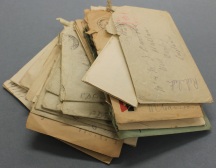
Pearl Harbor
The above map is a section of a map of Pearl Harbor that one of the Japanese pilots carried. If you look close it shows where the ships were expected to be. Also the designated targets for each Japanese squadron. It is an interesting look at such a seminal historic event. Albeit through a lens different from what we normally see.
Pearl Harbor will always have a special place in our national psyche. The general public had no idea that relations with Japan had degraded so far. Most eyes were focused towards Europe and the rise of Germany. The government, however, knew that Japan was possibly an issue.
Jumping on the bandwagon that we “knew” Pearl Harbor was going to be attacked is sort of silly and actually immaterial. Once Japan invaded China the US took a course of action that made war almost unavoidable. On June 24th, 1941 President Roosevelt froze all Japanese assets in the US. With international cooperation throughout the world, Japan’s access to oil was cut off. Its current reserves were set to last only about three years, half that if it continued to expand its war machine.
The decision was made by their high command to strike out and take the resources they needed from the Dutch East Indies, but they knew the US would not sit idly by and allow it. They decided that the best course of action was to attack the US fleet in Pearl Harbor with the goal of landing such a devastating blow that the US would not have time to recover before the resources were secured, and by then the Japanese hoped to secure a peace treaty without fighting the US. They really underestimated the United States, a mistake that many enemies have made over the years.


![Dunkirk (2017) (BD) [Blu-ray]](https://i0.wp.com/images-na.ssl-images-amazon.com/images/I/91k9hxDuvaL._SX385_.jpg?w=474&ssl=1)






